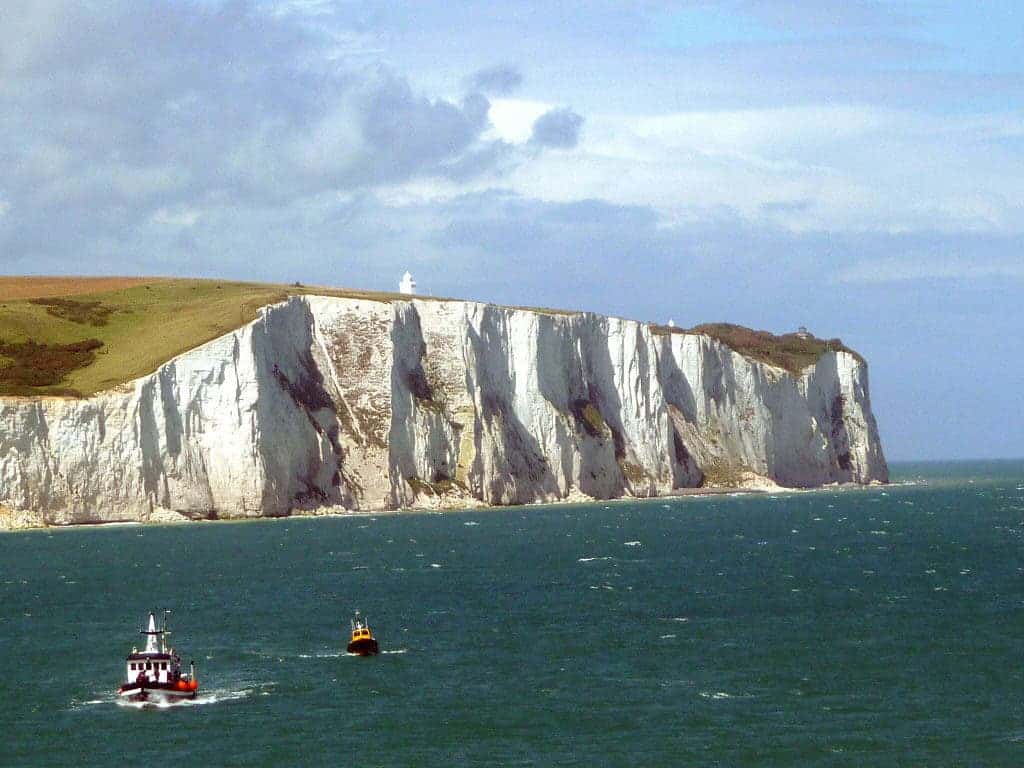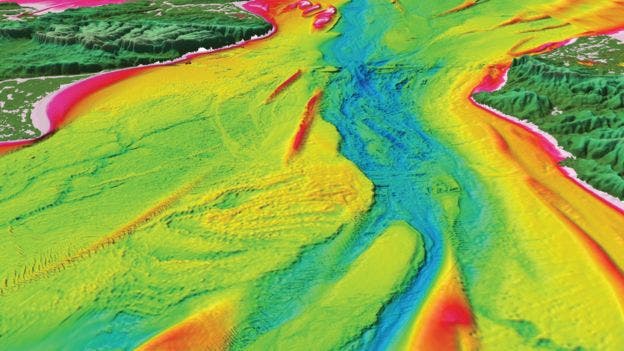
The White Cliffs of Dover. It’s here that a land bridge connected Britain with Europe at Calais at the other side. Credit: Wikimedia Commons.
Last week, history was made when British Prime Minister Theresa May set in motion the process that will see the country exit the European Union. This wouldn’t be the first Brexit, though. Some 450,000 years ago a mega flood destroyed a land bridge that had physically connected the island of Britain with continental Europe for some 10 million years.
This amazing crossing was about 20 miles wide and ran from what’s today Dover to Calais, in France. Geologists say it was mostly made of chalk as evidenced by cross-section photos of the famous white cliffs of Dover, one of the bridge heads.
The work to paint the full picture of this geological Brexit first began in the 1980s when underwater surveys were carried out in preparation for the Channel Tunnel, the most expensive construction ever proposed at the time.
In 2007, scientists from the Imperial College London led by Sanjeev Gupta and Jenny S. Collier won a longstanding battle to obtain previously unavailable records of the English Channel’s underwater topography.
From the onset, the team recognized that west of the Strait of Dover, the channel’s bedrock was slashed by a network of deep valleys whose streamlined nature suggest these were shaped by a flood. To cause such destruction, the flood had to be of epic proportions, which confirmed previous assumptions about the faith of the Dover-Calais land bridge.
Some ten years later, Gupta and Collier have teamed up with colleagues from Belgian and France to analyze the channel’s bedrock more closely. They were particularly interested in sediment-filled pits that dotted the bedrock between Dover and Calais.

The seabed of the English Channel is marked by features that clearly show a mega flood gush. There were actually two megafloods, the latter likely triggered by an earthquake. Credit: Imperial College London.
Engineers didn’t foresee these pits when they first designed the Channel Tunnel and had to reroute construction to avoid the dangerous pits. At the time, scientists thought these pits were carved by glaciers but we now know that ice never reached that south during the last ice age. Instead, the researchers say the pits were giant plunge pools made by cataracts cascading down from the bridge — and these must have fallen from a considerable height too judging from the depth of the pits. Estimates suggest the land bridge stood 100 to 300 feet above the water.
Some 450,000 years ago, most of Britain except for the southern bits was covered in a glacier which edged out across the North Sea and joined with the glacier covering Norway. Effectively, the North Sea was dammed and, naturally, the rivers that used to drain in it swell until they formed a huge lake.
As the glaciers started to melt, more and more water began to accumulate in the lake and began cascading over the Dover-Calais land bridge. These waterfalls would carve vast holes in the bedrock beneath. Eventually, the western side of the bridge retreated from all the erosion. Once a section gave way, a cataclysmic flood flowed through the breach causing deep valleys to form as the lake emptied its contents in the English Channel.
Researchers estimate up to 1 million cubic feet of water per second could have flown through the breach in the bridge, as reported in a paper published in Nature Communications.
Judging from sediment records, this sort of event happened at least twice. Once some 430,000 years ago then again some 160,000 years ago when a second lake built up in the North Sea with the southern boundary being a wall of sediment left by the sudden emptying of the first lake. When this second lake emptied itself too, the rest of the land bridge was swept by it making Britain the island we all know today.
“This was really one of the defining events for north west Europe – and certainly the defining event in Britain’s history,” Gupta told the BBC.
“This chance geological event, if it hadn’t happened, would have meant Britain was always connected to the continent.”
Gupta says he hopes to study this event in greater detail by drilling for sediments. This is very challenging not least because the English Channel is one of the busiest shipping routes in the world.
The UK might never join the EU again but what seems certain is the island will once again become part of Europe when next ice age hits.









